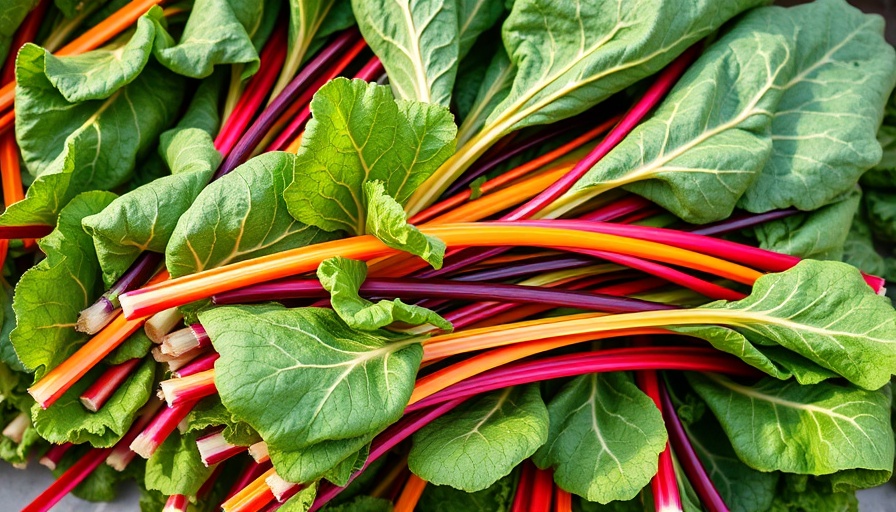
The Nutritional Powerhouse of Swiss Chard
Swiss chard, a member of the beet family, is a true super green that boasts impressive nutritional credentials. With its attractive leafy greens, which come in a range of colors from deep green to vibrant burgundy, it is not only a feast for the eyes but also for health-conscious eaters. Ranking at a perfect 1,000 on the Aggregate Nutrient Density Index (ANDI) scale, Swiss chard provides high levels of vitamins A, C, and K, alongside essential minerals like manganese and potassium. This makes it an ideal choice for those looking to incorporate more nutrient-dense foods into their diet.
Cultivating Swiss Chard: An Easy and Rewarding Journey
Growing Swiss chard is a delightful experience for both seasoned gardeners and beginners alike. These biennial plants are typically grown as annuals and can be cultivated through direct sowing or by transplanting seedlings. They thrive in a variety of soil types, making them a resilient choice for backyard gardening enthusiasts. A cut-and-come-again crop, Swiss chard allows for continuous harvesting—simply snip outer leaves, and new growth will follow. This means you can enjoy a steady supply of fresh greens from early spring to late fall, with flavors actually improving after a light frost.
Harvesting Swiss Chard: When and How to Pick
To maximize the quality and yield of your gardening project, timing and technique are key when it comes to harvesting Swiss chard. For the best taste, harvest young leaves when they reach about 6 to 8 inches in height. These tender leaves can be used in salads, smoothies, or light sautés, showcasing their sweet, earthy flavors. For more mature greens, wait until they are fully formed and have developed their characteristic crinkled texture. When harvesting, use clean scissors or shears to cut off the outer leaves at the base of the plant, allowing the inner leaves to continue growing. This method not only reduces plant stress but promotes ongoing productivity.
Preserving Your Harvest: Storage Tips
Maximizing the longevity of your Swiss chard isn't just about when you harvest; it also involves proper storage techniques. To keep your greens fresh, rinse them off in cold water and dry them gently. Store them in a perforated plastic bag in the refrigerator to ensure they maintain their vibrant color and nutrients. Swiss chard can also be easily frozen for later use; simply blanch the leaves before freezing to preserve their texture and flavor. With these simple storage solutions, you can enjoy the benefits of your garden throughout the year.
Getting Creative: Culinary Uses for Swiss Chard
The versatility of Swiss chard in the kitchen is another reason to incorporate it into your gardening plans. While commonly steamed or sautéed, it can also be used as a healthy wrap for sandwiches, tacos, or even sushi. For a unique twist, try adding chopped Swiss chard to soups or casseroles, where it will soak up flavors while contributing its nutrient density. Baking it into savory muffins or frittatas can lead to delightful breakfast options. The possibilities are virtually endless!
Conclusion: Why Grow Swiss Chard?
Swiss chard is not just an aesthetically pleasing addition to your garden; it is a nutritional powerhouse that offers extensive culinary versatility. Whether you’re a seasoned gardener or just embarking on your indoor gardening journey, adding this beautiful leafy green to your vegetable garden layout can yield healthy rewards for you and your family. So why wait? Start planning your Swiss chard garden today and experience the benefits firsthand through vibrant flavors and health-boosting nutrition.
 Add Row
Add Row  Add
Add 




Write A Comment